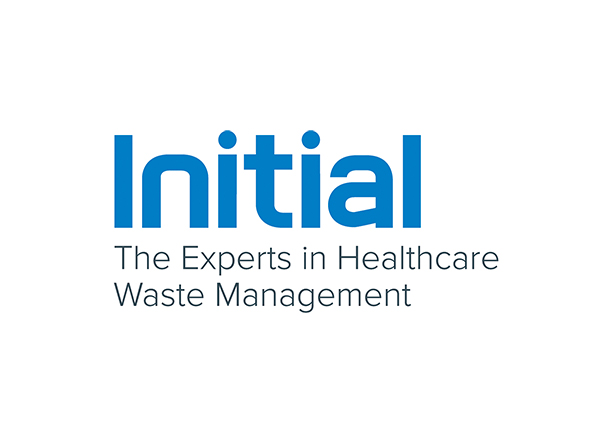Is Candida Auris a threat to your practice?
Featured Products Promotional FeaturesPosted by: Dental Design 22nd January 2020

Next to providing a high standard of dental care, protecting patients and staff against dangerous pathogens is a top priority in dentistry. To ensure everyone’s safety is achieved, infection control is absolutely essential, as is an up to date knowledge of the potential risks that pose a threat to the dental practice setting – of which there are many. The difficulty is that a number of microorganisms are still largely misunderstood by experts in the field, which can make eradicating them tricky.
One such pathogen is the relatively newly discovered Candida auris – a type of yeast that lives on the skin and causes infections in humans. Though discovered back in 2009 in the ear canal of a Japanese patient in Tokyo Metropolitan Geriatric Hospital, there is still a lot of mystery surrounding Candida auris, particularly in regards to its origins. Indeed, even now after a decade of study, experts are unsure why the fungus seemed to appear out of nowhere in several places around the globe at a similar time or why cases occur when they do. It’s no doubt why it has been ranked as the second most urgent threat in the 2019 AR Threats Report.[i] What we do know, however, is that Candida auris is usually reported in nursing care or hospital settings where a person’s health is already compromised. Patients who have had a central venous catheter, lines or tubes entering their body or who have recently received antibiotics or antifungal medications are thought to be most at risk.[ii] Conversely, it is rarely thought to affect someone who is considered to be in good health.[iii]
How it spreads
As for how it is spread, it is believed that person-to-person transmission could be the primary source, though surface contamination may also play a part.iii Again, further research will be required to determine more about the behaviour of Candida auris, but for now it is safe to say that the utmost care must be taken to prevent cross contamination from occurring moving forward.
Threat to the UK and to dentistry
As it stands, there is no evidence to suggest that there have been any outbreaks of Candida auris in dental practices, but that’s not to say that it won’t happen in the future. After all, when you consider that any patient who has a diagnosis of a severe underlying disease, diabetes, chronic kidney disease or immunosuppression is at increased risk of contracting the infection, it is perfectly within the realms of possibility to suggest that dental patients could be at risk.[iv]
Certainly, there are already a number of people that have been affected in the UK, with a news story from earlier on in the year claiming that Candida auris had been reported in 25 separate NHS hospitals at the time of writing. The report went on to claim that a total of 226 cases had been recorded, with eight Britons who had passed away in British hospitals found to be infected.[v] While Candida auris has not been determined as the cause of death (the patients were already seriously ill when they became infected), there can be no denying that this mysterious super fungus poses a real threat to humankind.
 Prevention is key
Prevention is key
That’s why infection control must continue to be implemented to a high standard. To help with this, Public Health England have published some guidance for laboratories, community healthcare settings, and hospital patients and visitors, outlining a number of key steps that should be taken.[vi] Unfortunately, there are no specific guidelines for dental settings but the main points are relevant to all healthcare professionals, so practices can stand to benefit. Otherwise, the Health Technical Memorandum 01-05 provides all the information that practitioners require to ensure decontamination is properly implemented – including advice on best practice – and there are a number of recent studies available to help protect against cross contamination.
There have been a number of reports, for instance, that suggest the use of chlorine-based products are effective for environmental cleaning,[vii],[viii] while those containing sodium hypochlorite and peracetic acid have been proven to be less effective against Candida auris.[ix] In light of this evidence, it may be time for some dental practices to review the decontamination products they currently use.
Comprised of Didecyldimethylammonium chloride, Benzalkonium chloride and Polyhexamethylene biguanide and proven to have a 99.9999% kill rate, the Steri-7 Xtra range from Initial Medical is an ideal option for any practice looking to protect against Candida auris and other dangerous pathogens. There are a range of products available, including a high-level surface disinfectant cleaner, biocidal wipes and ready to use spray, ensuring that all bases are covered. All products feature a unique reactive barrier technology for ultimate protection.
Be prepared
There can be no doubt that Candida auris, like other pathogens, is a potential threat for dentistry. However, if practices stay abreast of the latest evidence and continue to implement effective infection control protocols, the risk of cross contamination should be kept at bay.
For further information please visit www.initial.co.uk/medical or Tel: 0870 850 4045
-Ends-
About Initial Medical Waste Experts
Initial Medical is an expert in healthcare waste management, providing a complete collection, disposal and recycling service for hazardous and non-hazardous waste and offensive waste produced by businesses and organisations within the UK.
The safe management of healthcare waste is vital to ensure your activities are not a risk to human health. Initial Medical’s healthcare waste services ensure that all of your waste is stringently handled in compliance with legislation and in accordance with Safe Management of Healthcare Waste best practice guidelines, providing you with the peace of mind that you are adhering to current legislation.
For further information please visit www.initial.co.uk/medical or Tel: 0870 850 4045
Media enquiries:
For more information, please contact:
01227 265700
References
[i] Centers for Disease Control and Prevention. Antibiotic Resistance Threats in the United States 2019. Accessed online 27 November 2019 at https://www.cdc.gov/drugresistance/pdf/threats-report/2019-ar-threats-report-508.pdf
[ii] Centers for Disease Control and Prevention. General Information about Candida auris. Accessed online 27 November 2019 at https://www.cdc.gov/fungal/candida-auris/candida-auris-qanda.html
[iii] Public Health England. Candida auris – a guide for patients and visitors. Published August 2017. Accessed online 27 November 2019 at https://assets.publishing.service.gov.uk/government/uploads/system/uploads/attachment_data/file/637101/Candida_auris_-_a_guide_for_patients_and_visitors.pdf
[iv] Lone SA, Ahmad A. Candida auris – the growing menace to global health. Mycoses 2019; 62 (8). Accessed online 28 November 2019 at https://doi.org/10.1111/myc.12904
[v] Evening Standard. Candida auris: Eight Britons who dies in UK hospitals were infected with Japanese super-fungus. Published 29 April 2019. Accessed online 28 November 2019 at https://www.standard.co.uk/news/uk/eight-britons-who-died-in-hospital-were-infected-with-japanese-superfungus-a4128901.html
[vi] Public Health England. Candida auris within the United Kingdom: updated guidance published. Updated 11 August 2017. Accessed online 28 November 2019 at https://www.gov.uk/government/publications/candida-auris-emergence-in-england/candida-auris-within-the-united-kingdom-updated-guidance-published
[vii] Schelenz S, Hagen F, Rhodes JL, et al. First hospital outbreak of the globally emerging Candida auris in a European hospital. Antimicrob Resist Infect Control. 2016;5:35. Accessed online 28 November 2019 at https://www.ncbi.nlm.nih.gov/pubmed/27777756?dopt=Abstract
[viii] Biswal M, Rudramurthy SM, Jain N, et al. Controlling a possible outbreak of Candida auris infection: lessons learnt from multiple interventions. J Hosp Infect. 2017;97:363‐370. Accessed online 28 November 2019 at https://www.ncbi.nlm.nih.gov/pubmed/28939316?dopt=Abstract
[ix] Kean R, Sherry L, Townsend E, et al. Surface disinfection challenges for Candida auris: an in‐vitro study. J Hosp Infect. 2018;98:433‐436. Accessed online 28 November 2019 at https://www.ncbi.nlm.nih.gov/pubmed/29203448?dopt=Abstract










